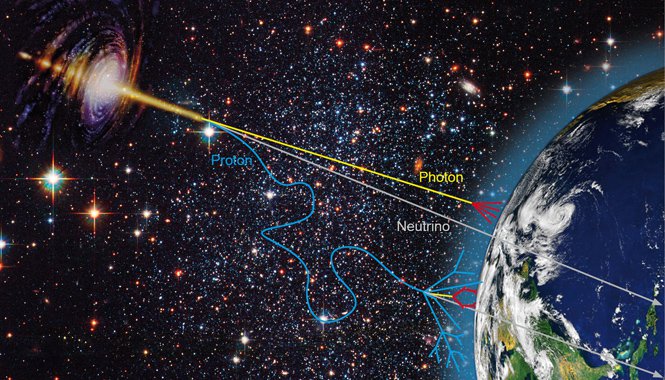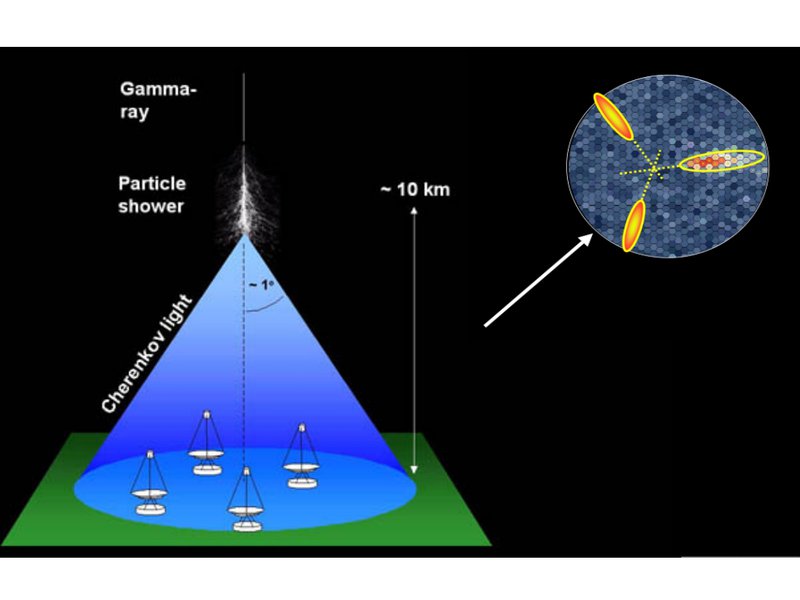Cherenkov Telescope Array Observatory

Cosmic very high-energy (VHE, E ≥ 30 GeV) photons (called also gamma rays) carry unique information about the most energetic phenomena in the Universe. They shed light on violent non-thermal phenomena such as the galactic supernova explosions or the surroundings of the super-massive black holes in the cores of galaxies. They can also help to reveal answers to fundamental physics questions such as the nature of dark matter. Photons do not deflect in galactic or intergalactic magnetic fields and therefore point back to the sites of their creation. At these high energies, photons from even the strongest sources such as the famous Crab Nebula are very rare. Their flux is at least three orders of magnitude lower compared to the flux of protons and heavier nuclei.

When VHE photons enter the atmosphere, they interact with nuclei of atmospheric gases and create extended showers of secondary particles. Due to high energies, these particles travel faster than light in the atmosphere (which is lower than the speed of light in vacuum) and emit weak and short flash esof the so called Cherenkov light. This effect is being exploited in the most sensitive experimental approach to day in VHE gamma-ray astronomy, based on simultaneous imaging of Cherenkov flashes using multiple telescopes (imaging air Cherenkov telescopes or IACTs), and reconstruction of the primary gamma-ray properties from those images. A new generation IACT facility, the Cherenkov Telescope Array Observatory (CTAO) with design sensitivity improved by at least an order of magnitude compared to existing VHE instruments and extended energy coverage is expected to enable the detection of more than 1000 new VHE gamma-ray sources over the whole sky.

The construction of the Large-Sized Telescopes (LST), one of two classes of telescopes to be featured in the future CTAO Northern Site at the Observatorio del Roque de los Muchachos on the Canary island of La Palma is in progress. The prototype of the LST, called LST-1, finished construction and was inaugurated on October 10th, 2018. LST-1 is currently in the commissioning phase to initially ensure that the prototype satisfies the requirements put forth by CTAO and afterwards to improve the telescope's sensitivity and performance. Three more LSTs are being built at the Observatorio del Roques de los Muchachos, finishing construction in 2026. The R&D of the CTA-N Raman Lidar for atmospheric characterization at the northern site is also under way.
Slovenia became a shareholder of CTAO gGmbH, which manages the construction and operation of CTAO, in December 2017. Slovenian group, which at the moment includes 5 researchers, 6 postdocs and 4 PhD students, is involved in both observatory construction related and science preparation related tasks.
- Samo Stanič is the leader of the group and the representative of Slovenia to the Board of government representatives for the CTAO. He is coordinating construction related activities in Slovenia.
- Danilo Zavrtanik is a member of the CTAO gGmbH Council.
- Marko Zavrtanik is the member of the CTAO Administrative and Finance Committee (AFC).
- Serguei Vorobiov is the representative of the Slovenian group in the CTAC Board.
- Gabrijela Zaharijas is the former coordinator of the Dark Matter and Exotic particles working group of the CTAC. She is coordinating science related activities in Slovenia.
- Christopher Eckner is the co-coordinator of the Dark Matter and Exotic particles working group of the CTAC.
